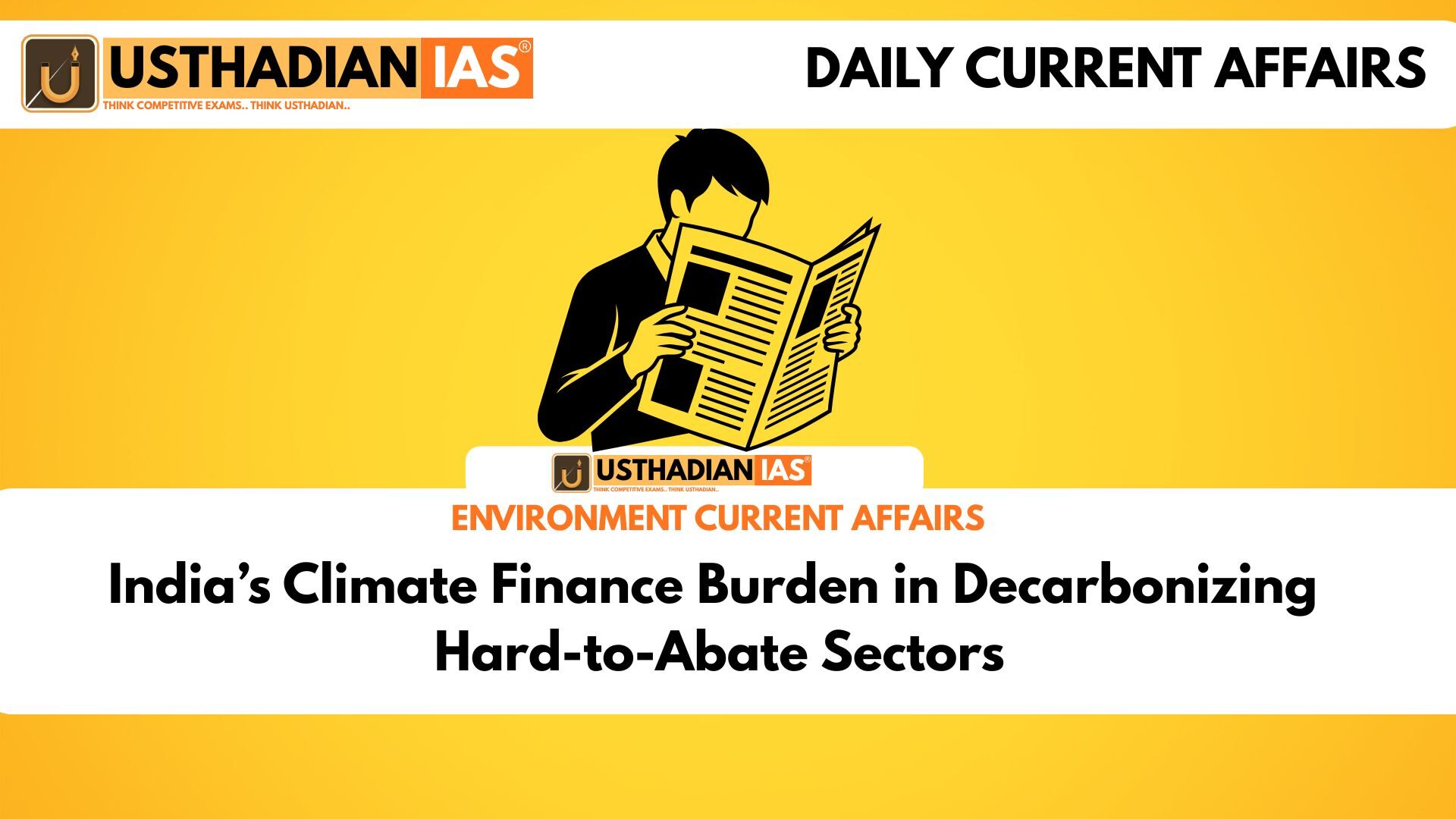Emissions on the rise
India’s Climate Finance Burden in Decarbonizing Hard-to-Abate Sectors: India’s contribution to global carbon emissions has expanded significantly, moving from 2.5% in 1990 to about 8.2% in 2023. This growth is tied to industrial expansion and higher energy demand. Still, India’s per capita emissions remain below the world average, underscoring its relatively modest footprint compared to developed nations.
Static GK fact: India is the world’s third-largest emitter after China and the United States.
Climate change and economic risks
The study warns of serious economic consequences if climate action is delayed. By 2030, India may face a decline of around 2% in per capita GDP, and by 2047, the loss could escalate to between 3% and 9%, depending on policy choices. Climate disruptions, such as extreme heat and unpredictable rainfall, could weaken agriculture, industry, and overall productivity.
Static GK fact: The National Action Plan on Climate Change (NAPCC) was launched in 2008 to address India’s climate challenges.
Funding requirement for energy transition
According to CSEP, India must allocate nearly 1.3% of its GDP every year to cut emissions in power, transport, steel, and cement. These four are regarded as hard-to-abate sectors because they rely heavily on fossil fuels and energy-intensive operations. Securing such large-scale financing will require combined efforts from the state, private investors, and international partners.
Static GK Tip: As of 2023, India’s renewable energy installed capacity exceeds 170 GW.
Public investment and infrastructure push
The report underlines the government’s responsibility to lead in critical areas such as EV charging networks, advanced storage solutions, and R&D for smart grids and hydro-pump projects. State-led initiatives can lower risks and set the stage for greater private involvement in low-carbon technologies.
Mobilizing private sector participation
Attracting private capital is crucial for scaling up green mobility, low-carbon cement production, and cleaner steelmaking. Incentives, subsidies, and favorable regulations will be essential to boost investment in emerging climate-friendly technologies.
Global cooperation for advanced technologies
CSEP also emphasizes the importance of international partnerships, especially in transferring Carbon Capture and Storage (CCS) and other breakthrough technologies. Collaboration with global institutions and advanced economies can make decarbonization faster and more cost-effective for India.
Static GK fact: The UNFCCC was established in 1992 at the Earth Summit in Rio de Janeiro to coordinate global climate efforts.
Static Usthadian Current Affairs Table
India’s Climate Finance Burden in Decarbonizing Hard-to-Abate Sectors:
| Topic | Detail |
| Report title | India’s Climate Finance Requirements |
| Published by | Centre for Social and Economic Progress (CSEP) |
| Focus sectors | Power, road transport, steel, cement |
| India’s carbon emission share 1990 | 2.5% |
| India’s carbon emission share 2023 | 8.2% |
| Per capita GDP loss forecast 2030 | 2% |
| Per capita GDP loss forecast 2047 | 3–9% |
| Annual finance needed for decarbonization | 1.3% of GDP |
| Key government role | Infrastructure, R&D, EV charging, grid management |
| Key international cooperation area | Carbon Capture and Storage (CCS) |








